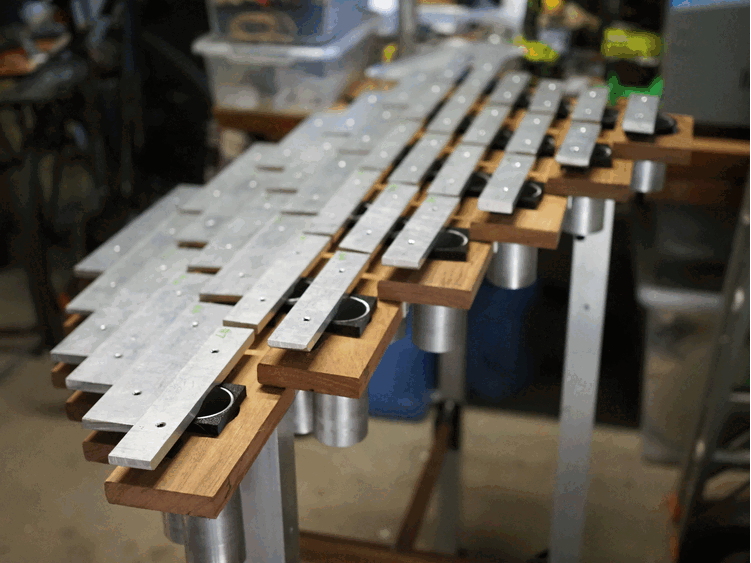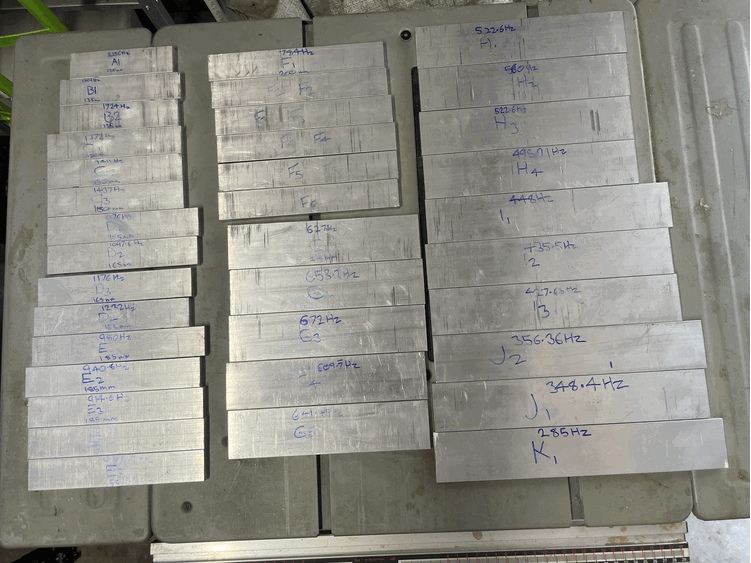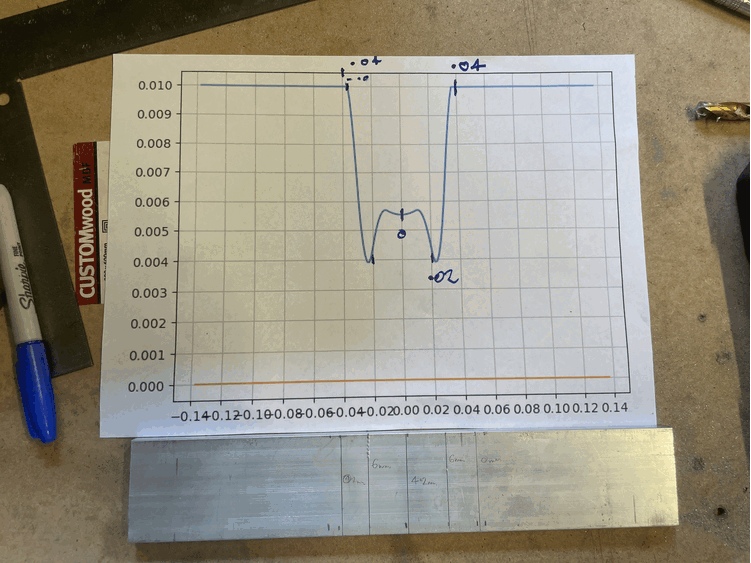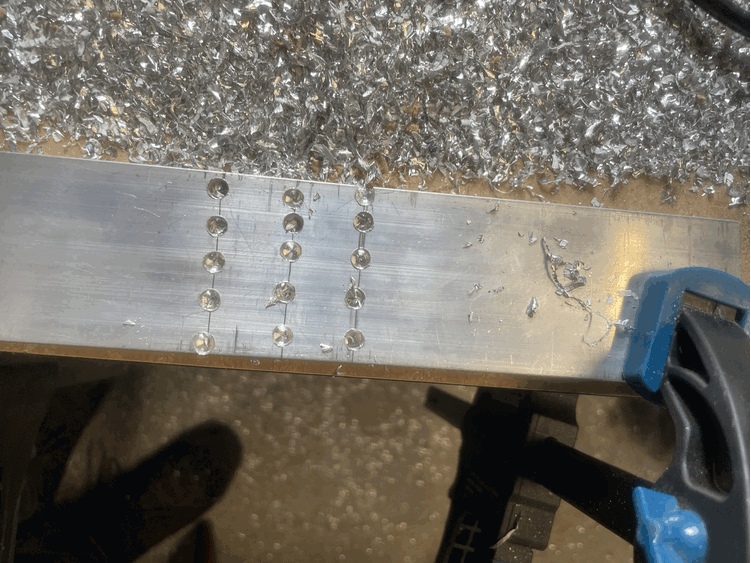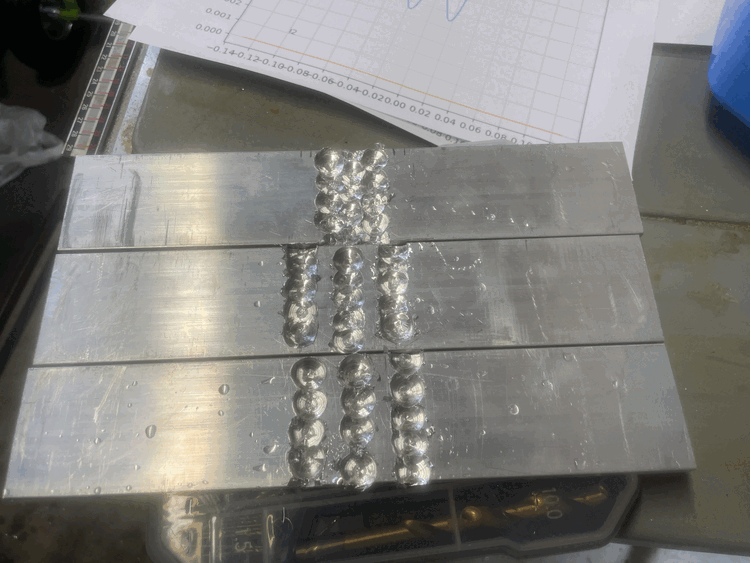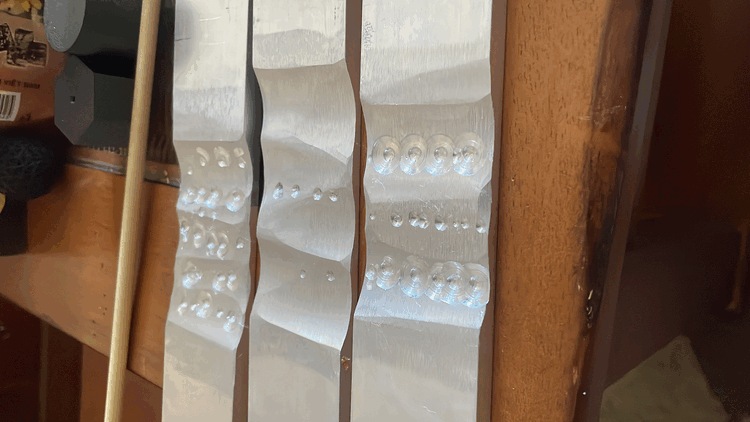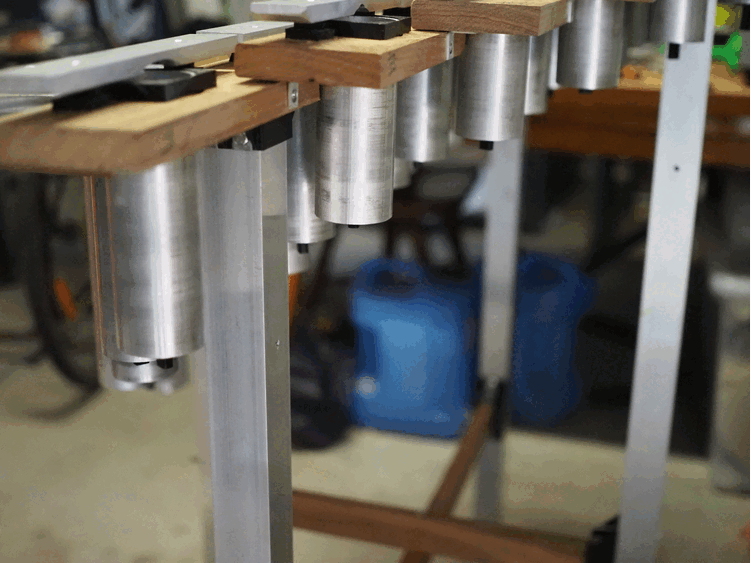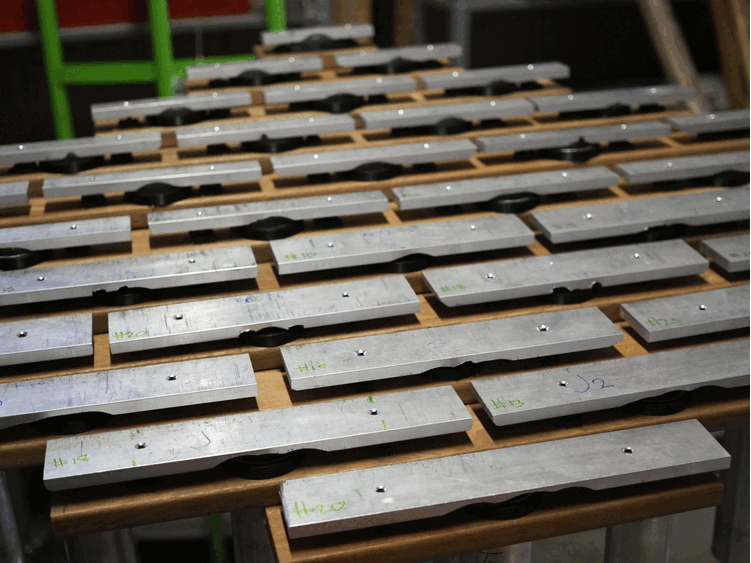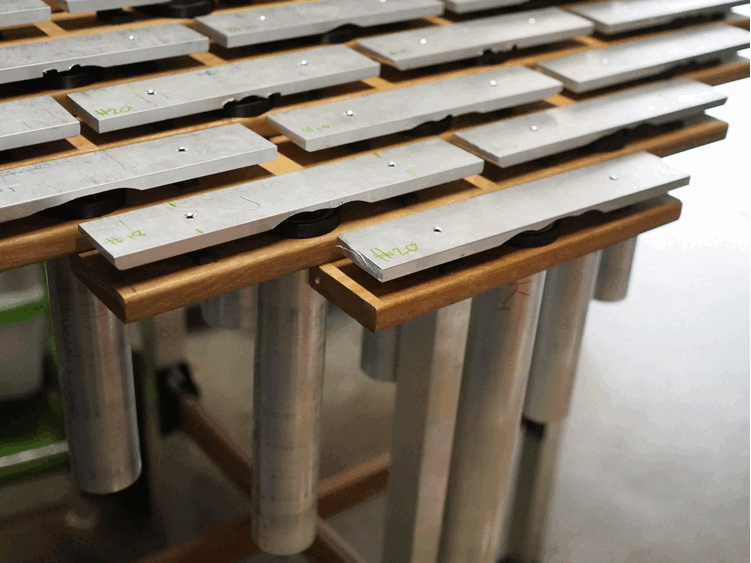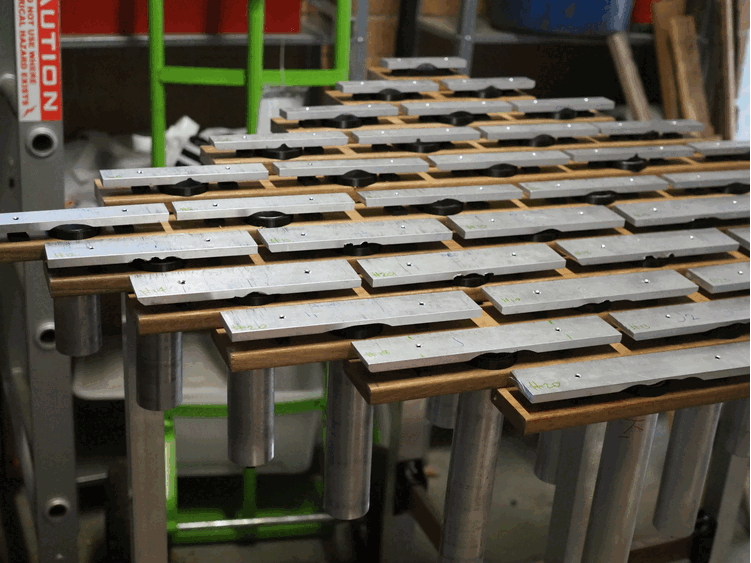Diamond vibraphone
I constructed this instrument in early 2025. The layout and tuning is based on Harry Partch’s diamond marimba. This is a microtonal instrument in just intonation: all of the frequencies are based on relatively simple ratios. The layout is optimised for arpeggios: diagonals running north-east/south-west produce a major chord, while diagonals running north-west/south-east produce a minor chord.
I have been working with Amanda Cole, a Sydney composer interested in just intonation and Harry Partch, and hope this instrument will be used in performance soon.
This instrument is not strictly a vibraphone as it doesn’t have a motor, paddles or a sustain pedal, but the bars are tuned like a vibraphone and it has a similar range.
It is almost finished as of April 2025. See below for more photographs or watch a short clip on youtube:
The bars are made from 10mm aluminium flat bar stock. The front (bass) half of the vibraphone uses 50mm-wide bars. The back (treble) half of the vibraphone uses 32mm-wide bars. I used narrower bars for the back because the highest bars are fairly short – the shortest bar is 120mm. The beam theory I used only applies when the bars are much longer than they are wide, and I was worried that for a 50mm by 120mm bar, the 50mm wavelength would be close enough to interfere with the 120mm wavelength.
The harmonics are tuned to 1,4,10. To tune the harmonics, I used my Timoshenko beam theory implementation to generate curves for each bar:
Usually, one would use a bandsaw to roughly cut out the curve, then use a belt sander to clean it up. I don’t own a bandsaw, so I used a drill to remove most of the material:
The drilled bars are quite messy and are very rough approximations of the graph:
While sanding, I used my harmonic tuner to tune the overtones. None of the existing strobe tuner software that I found supported the diamond’s exotic tuning. The bars clean up nicely after enough sanding:
A video of a test bar in action:
More photographs of the almost-finished instrument:
